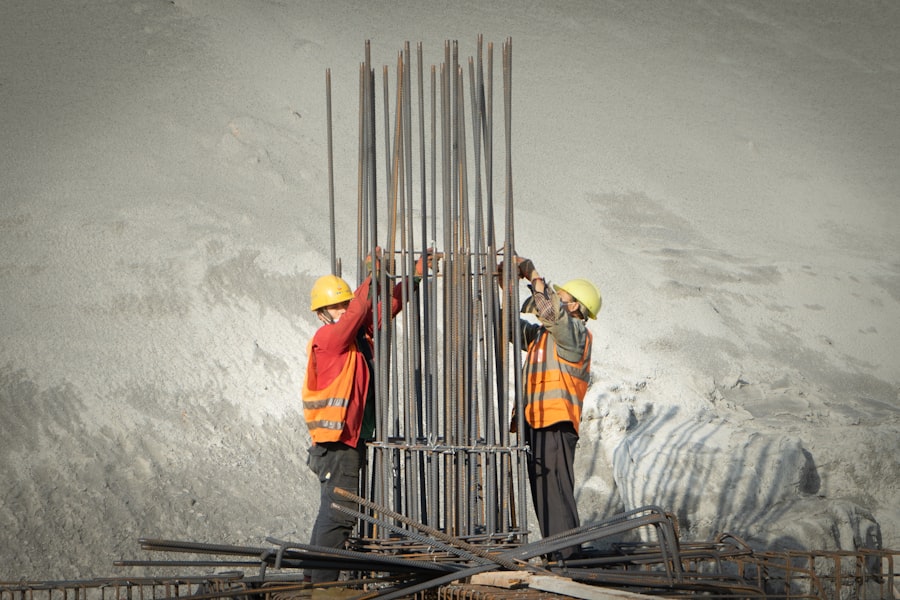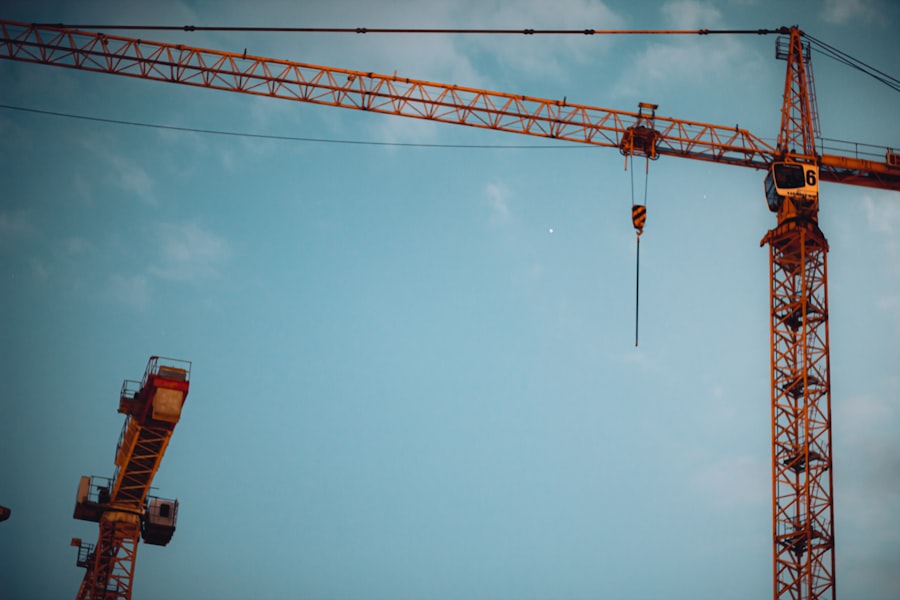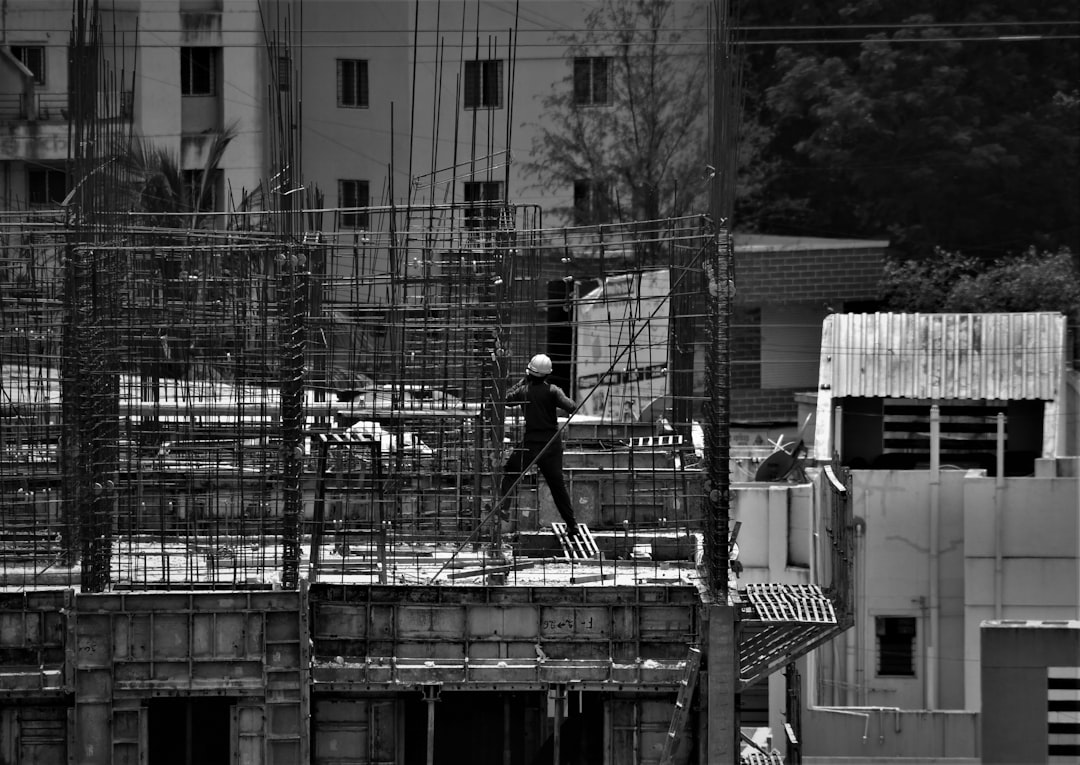Construction noise is an omnipresent aspect of urban life, particularly in bustling metropolises like New York City. The sounds generated from heavy machinery, hammering, and other construction activities can significantly disrupt the daily lives of residents. This noise pollution not only affects the immediate environment but also has broader implications for community well-being.
The cacophony can lead to increased stress levels, sleep disturbances, and a general decline in quality of life for those living nearby. As construction projects proliferate in urban areas, understanding the impact of this noise becomes increasingly vital for both residents and city planners. Moreover, the psychological effects of construction noise can be profound.
Studies have shown that prolonged exposure to high decibel levels can lead to irritability and anxiety among residents.
In essence, construction noise is not merely an inconvenience; it can alter the fabric of community life, affecting social interactions and overall mental health.
Recognizing these impacts is the first step toward addressing the challenges posed by construction noise in urban settings.
Key Takeaways
- Construction noise can have a significant impact on residents’ quality of life, causing stress, sleep disturbances, and reduced productivity.
- New York City has legal regulations and noise limits in place to control construction noise and protect residents from excessive disturbance.
- Residents can deal with construction noise by communicating with construction companies, using soundproofing techniques, and seeking help from city agencies for noise complaints.
- Construction sites can reduce noise through techniques such as using quieter equipment, erecting barriers, and scheduling noisy activities during less disruptive times.
- Prolonged exposure to construction noise can lead to health effects such as hearing loss, cardiovascular issues, and mental health problems, highlighting the importance of noise mitigation in construction planning and development.
Legal Regulations and Noise Limits in New York City
In New York City, legal regulations govern construction noise to protect residents from excessive disturbances. The city has established specific noise limits that construction sites must adhere to, particularly during designated hours. According to the New York City Noise Code, construction activities are generally permitted from 7 AM to 6 PM on weekdays, with stricter limitations on weekends and holidays.
These regulations aim to balance the needs of development with the rights of residents to enjoy peace and quiet in their homes. Enforcement of these regulations falls under the jurisdiction of various city agencies, including the Department of Environmental Protection (DEP) and the Department of Buildings (DOB). These agencies are responsible for monitoring compliance and addressing complaints from residents.
When construction noise exceeds permissible levels, residents have the right to file complaints, prompting investigations and potential penalties for non-compliant contractors. Understanding these legal frameworks empowers residents to advocate for their rights and seek relief from disruptive construction activities.
Tips for Dealing with Construction Noise as a Resident

Residents facing the challenges of construction noise can adopt several strategies to mitigate its impact on their daily lives. One effective approach is to establish a routine that accommodates the noise schedule. By planning activities during quieter times or utilizing earplugs and noise-canceling headphones, individuals can create a more manageable environment.
Additionally, engaging in sound-absorbing activities, such as reading or listening to music, can help drown out the disruptive sounds from outside. Another practical tip involves fostering a sense of community among neighbors. By discussing shared concerns about construction noise, residents can collectively address issues with contractors or city officials.
Organizing community meetings or forming neighborhood associations can amplify their voices and lead to more effective solutions. Ultimately, collaboration among residents can foster a supportive environment that helps everyone cope with the challenges posed by construction noise.
Noise Reduction Techniques for Construction Sites
| Technique | Effectiveness | Cost |
|---|---|---|
| Noise barriers | High | Medium |
| Quieter equipment | High | High |
| Enclosures | Medium | High |
| Regular maintenance | Low | Low |
Construction companies are increasingly recognizing the importance of implementing noise reduction techniques at their sites. These strategies not only benefit nearby residents but also enhance the overall efficiency of construction operations. One common method involves using quieter machinery and tools designed specifically to minimize noise output.
For instance, electric-powered equipment tends to produce less noise than traditional gas-powered alternatives, making it a preferable choice for urban environments. In addition to selecting quieter equipment, construction companies can employ sound barriers and acoustic enclosures around particularly noisy operations. These physical structures help absorb and deflect sound waves, reducing the overall noise level that escapes into the surrounding area.
Furthermore, scheduling high-noise activities during less disruptive hours can also contribute to a more harmonious coexistence between construction sites and nearby residents. By prioritizing noise reduction techniques, construction companies can demonstrate their commitment to being good neighbors while still fulfilling their project goals.
Seeking Help from City Agencies for Noise Complaints
When construction noise becomes unbearable, residents have the option to seek assistance from city agencies tasked with addressing such issues. The first step typically involves documenting instances of excessive noise, including dates, times, and descriptions of the disturbances. This information is crucial when filing a complaint with agencies like the Department of Environmental Protection (DEP).
Residents can report violations through various channels, including online forms or direct phone calls. Once a complaint is lodged, city officials may conduct investigations to assess the validity of the claims. If violations are confirmed, contractors may face fines or be required to implement corrective measures to reduce noise levels.
Engaging with city agencies not only provides residents with a means to address their concerns but also holds construction companies accountable for their impact on the community. By actively participating in this process, residents can contribute to a more peaceful living environment.
Communicating with Construction Companies about Noise Concerns

Effective communication between residents and construction companies is essential for addressing noise concerns in urban areas. Residents should feel empowered to reach out directly to contractors or project managers to express their grievances regarding excessive noise levels. A polite yet assertive approach can often yield positive results; many companies are willing to listen and make adjustments when they understand the impact their work has on local communities.
In addition to voicing concerns, residents can also inquire about specific measures that construction companies are implementing to mitigate noise. By fostering an open dialogue, both parties can work collaboratively toward solutions that benefit everyone involved. Construction companies may appreciate feedback from residents as it helps them improve their practices and maintain a positive reputation within the community.
Creating a Peaceful Environment at Home Despite Construction Noise
Despite the challenges posed by construction noise, residents can take proactive steps to create a peaceful environment at home. One effective strategy involves rearranging living spaces to minimize exposure to external sounds. For instance, positioning bedrooms away from noisy streets or construction sites can significantly reduce disturbances during sleeping hours.
Additionally, utilizing heavy curtains or drapes can help absorb sound and create a more tranquil atmosphere indoors. Incorporating calming elements into home decor can also contribute to a sense of peace amidst external chaos. Soft lighting, soothing colors, and comfortable furnishings can create an inviting space that promotes relaxation.
Engaging in mindfulness practices such as meditation or yoga can further enhance one’s ability to cope with stress caused by construction noise. By intentionally curating their living environment, residents can foster a sense of calm even in the midst of ongoing construction activities.
Utilizing Soundproofing Techniques for Homes and Businesses
For those particularly affected by construction noise, investing in soundproofing techniques may be a worthwhile consideration. Various methods exist to enhance sound insulation within homes and businesses, ranging from simple DIY solutions to professional installations. One common approach involves sealing gaps around windows and doors with weatherstripping or acoustic caulk to prevent sound leakage.
Additionally, adding sound-absorbing materials such as carpets, rugs, or acoustic panels can significantly reduce noise levels within indoor spaces. For businesses that rely on a quiet atmosphere for productivity or customer satisfaction, more extensive soundproofing measures may be necessary. This could include installing double-glazed windows or specialized soundproof doors designed to block external noise effectively.
By implementing these techniques, individuals can create a more serene environment that allows them to thrive despite nearby construction activities.
Understanding the Health Effects of Prolonged Construction Noise Exposure
Prolonged exposure to construction noise can have serious health implications for individuals living in close proximity to active sites. Research has shown that chronic exposure to high decibel levels can lead to various health issues, including hearing loss, cardiovascular problems, and increased stress levels. The constant barrage of sound can trigger physiological responses in the body that contribute to long-term health complications.
Moreover, studies have indicated that individuals exposed to persistent noise pollution may experience heightened anxiety and depression rates. The inability to escape disruptive sounds can create a sense of helplessness among residents, further exacerbating mental health challenges. Understanding these health effects underscores the importance of addressing construction noise not only as an inconvenience but as a significant public health concern that warrants attention from both city officials and construction companies alike.
Finding Alternative Accommodations during Noisy Construction Projects
During particularly disruptive construction projects, some residents may find it necessary to seek alternative accommodations temporarily. This could involve staying with friends or family members who live in quieter areas or exploring short-term rental options nearby. While this may require some logistical planning and financial considerations, it can provide much-needed relief from incessant noise.
For those who prefer not to leave their homes entirely, creating designated quiet zones within living spaces can also be beneficial. Setting up a comfortable area equipped with soundproofing materials allows individuals to retreat from noisy environments when needed. Ultimately, finding alternative accommodations—whether temporary or through creative home arrangements—can help residents maintain their well-being during challenging construction periods.
Advocating for Noise Mitigation in Construction Planning and Development
Advocacy plays a crucial role in promoting noise mitigation strategies within construction planning and development processes.
By voicing their concerns early in the planning stages, they can influence decision-makers to prioritize noise reduction measures.
Additionally, collaborating with community organizations focused on urban development can amplify residents’ voices and foster collective action toward better practices in construction planning. Advocating for policies that require contractors to implement noise mitigation techniques not only benefits current residents but also sets a precedent for future developments in urban areas. Through persistent advocacy efforts, communities can work toward creating environments that balance growth with quality of life considerations for all residents.
In conclusion, navigating the challenges posed by construction noise requires a multifaceted approach involving understanding its impacts, leveraging legal regulations, and fostering communication between residents and contractors. By employing various strategies—from soundproofing techniques at home to advocating for better practices in urban development—residents can take proactive steps toward creating a more peaceful living environment amidst ongoing construction activities.
New York City is renowned for its vibrant energy and bustling streets, but with that comes the inevitable challenge of construction noise. The constant hum of drills, hammers, and heavy machinery can be overwhelming for residents and visitors alike. An insightful article on this topic can be found on MyGeoQuest, which delves into the impact of construction noise on urban life and explores potential solutions to mitigate its effects. For more information, you can read the full article by visiting this link.
WATCH THIS! The Real Cost of NYC Living: Your Wallet, Sanity, and Subway Survival Skills
FAQs
What are the regulations regarding construction noise in New York City?
In New York City, construction noise is regulated by the Department of Environmental Protection (DEP). Construction noise is subject to specific time restrictions and decibel limits, which vary depending on the location and zoning of the construction site.
What are the permitted construction hours in New York City?
Construction is generally permitted between 7:00 AM and 6:00 PM on weekdays, and between 10:00 AM and 4:00 PM on Saturdays. Construction is prohibited on Sundays and certain holidays, unless a special permit is obtained.
What are the decibel limits for construction noise in New York City?
The decibel limits for construction noise in New York City vary depending on the zoning of the construction site. In residential areas, the limit is 45 decibels during the day and 42 decibels at night. In commercial areas, the limit is 80 decibels during the day and 75 decibels at night.
How can I report construction noise violations in New York City?
If you believe that a construction site is violating the noise regulations, you can report it to the DEP by calling 311. You can also file a complaint online through the DEP’s website.
Are there any exemptions to the construction noise regulations in New York City?
Certain construction activities, such as emergency repairs or work related to public health and safety, may be exempt from the normal noise regulations. However, these exemptions are subject to specific conditions and requirements.
